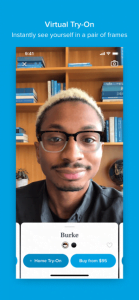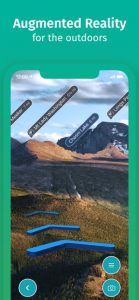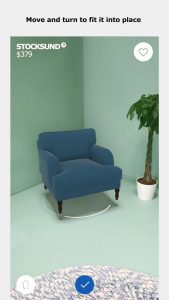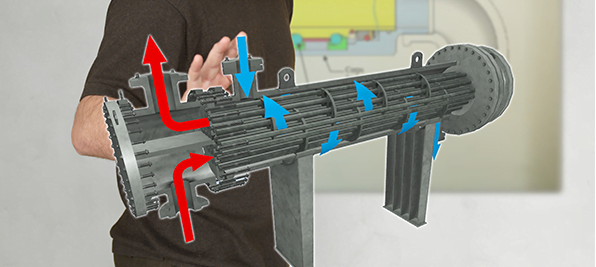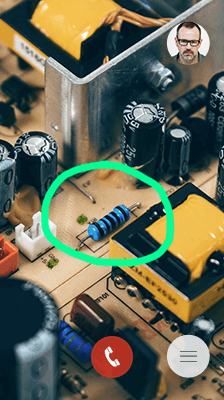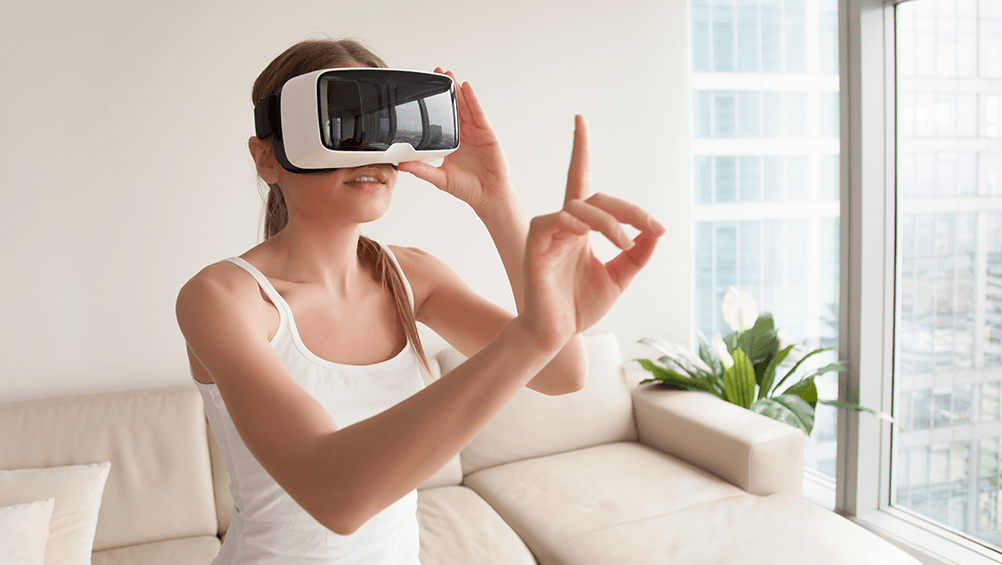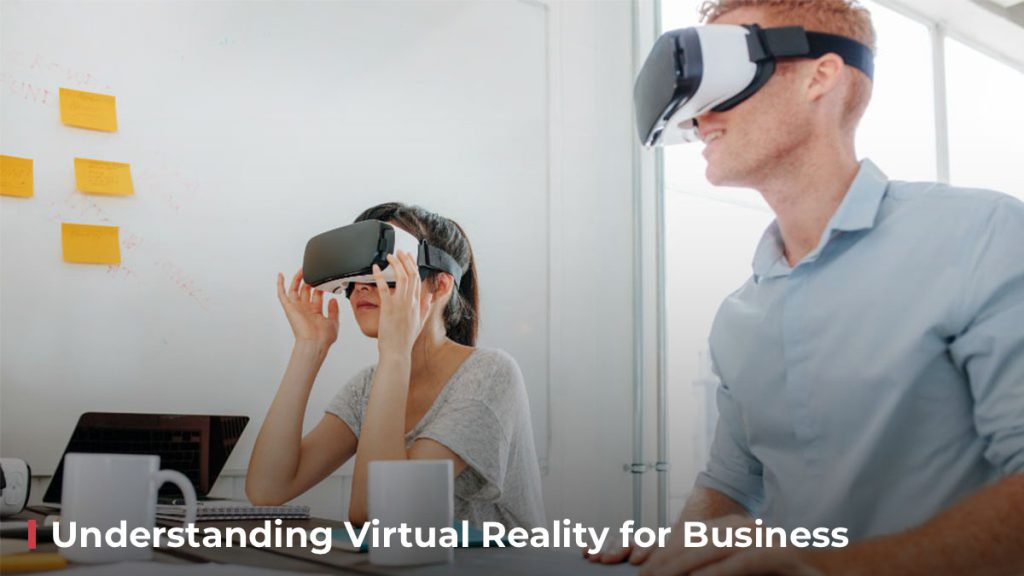7 Benefits of Augmented Reality (AR) & Virtual Reality (VR) in Business
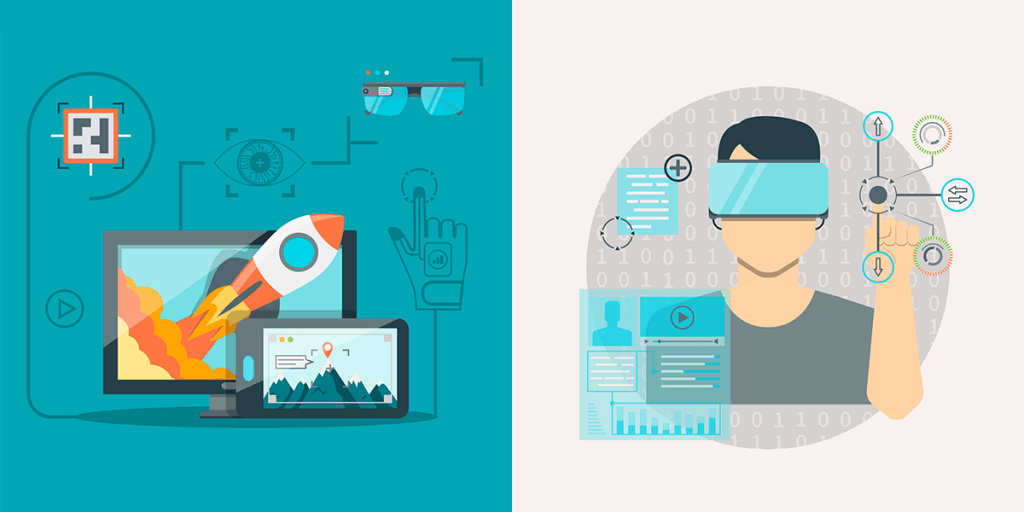
There was a time not so long ago when the promise of immersive augmented reality experiences with practical applications seemed like a failed pipedream. The equipment of the time was slow, unattractive, and relegated to little more than a novelty that few people could experience. Times have changed. Let’s uncover the new augmented reality use in business.
The rapid adoption of relatively powerful mobile devices alongside dedicated AR and VR devices have reignited the promise of obtainable virtual worlds. Popular apps like Pokemon GO! and Google Lens are bringing augmented reality to the masses, while Facebook’s acquisition of VR startup Oculus Rift hints at VR integration into the largest social network in the world. Whatever the application, it’s clear that businesses of every kind and scale are looking to augmented or virtual reality to push their business models into the next generation. How is augmented reality used in businesses?
Here are some of the ways industry innovators are making waves.
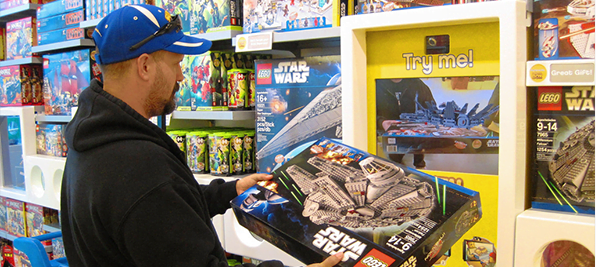
It’s no secret now that retail sales have been on the decline in the United States. Numerous consumer reports cite ascendant online marketplaces, lack of competitive prices, and pushy salespeople as key reasons the average American avoids shopping at brick and mortar locations. It’s no surprise then that retailers are looking to revitalize their retail locations by offering engaging virtual reality experiences to their customers.
A prime example of this new direction for retail comes from VR startup Nomadic. They secured $9 million in funding to develop deployable hardware that will allow retails customers to explore physical locations with VR-providing backpacks. This could be anything from a virtual showroom for prefabricated houses or entertainment applications like haunted houses. The key promise behind their technology is that users will be able to use physical objects to interact with the virtual one in the real world. Their funding seems to be a vote of confidence from Silicon Valley investors that this may well be the future of retail experiences for large retail companies. Retail is not the only industry to discover how to integrate virtual reality in business; tourism, entertainment, media, and other experience-driven segments are following suit.
After seeing the Warby Parker app, we started to think about the concept of wardrobe related augmented reality use cases. With the Warby Parker app, you can virtually try on glasses from their product line and see how they look on your face. This concept can be applied to numerous other articles of clothing. If you run a clothing line or work in marketing for a larger company like Nike, Adidas or another widely distributed brand, you can apply AR to help engage potential customers.
The difficulty of doing something with virtual products is that you need to have the 3D images created. For each item of clothing, you need a virtual representation. This can be more challenging when you consider clothing that has folds, creases, hoods, or other style factors that make it unique. With glasses, you have the frame, lens, and need to adapt to different face structures. The app has to identify anchor points like the bridge of the nose, eyebrows, and where the user’s ears are. With those points generated, AR images can accurately appear on top of the user’s face. This is just one of the benefits of augmented reality in business that allows users a more interactive experience.
“There are consumer applications and there are enterprise applications. This is the reason we’re so excited about AR. You rarely have new technology that both business and consumers see as key to them. That’s the reason I think it’s going to pervade your life – it’s going to go across both business and home life.”
– Tim Cook, Apple CEO
While driving through the mountains on long weekends one may wonder what peaks are in the rearview mirror. Through location-based augmented reality objects, you can. By assigning a physical location exact GPS coordinates and a digital location you can lay out important spots. This is similar to star watching apps that take into account where you are, providing a view of the night sky through your phone’s camera.
With an app like ViewRanger Skyline, you have mountains at your fingertip. By opening the app and looking through your phone’s camera you can see what peaks and mountains are on the horizon. This technology can be applied to numerous use cases in tourism and realty space.
For tourism, you could simply open an app and see what attractions are close to you along with preliminary details like elevation, distance, address, or other information.
For realty, think about if a company like Zillow wanted to provide an interactive tool to potential home buyers. They could produce an app to show available homes through a map-based system full of AR objects. These AR objects can be as simple as a green dot to indicate that the home is for sale and fits your search criteria. It can also be as advanced as showing you the price in front of the house, a relevant contact person, and even provide a link to the Zillow listing itself so you can check out more photos and details.
The IKEA Place app is produced by everyone’s favorite Swedish furniture maker. Thanks to COVID-19 in some areas we can’t make our way to their large, maze-like stores to view model rooms and pick out furniture; this “Place” app becomes even more relevant.
The basics are that you load the application and select whether you’d like to do a visual search or load an AR item from their available list. When you do a visual search, you are most likely leveraging something like Microsoft Azure’s cognitive services to analyze an item and try to match it to IKEA’s item database. This is useful for finding out a particular product’s name if you wanted to order more of the same thing. The app’s main function is to place an AR marker-based object into your home through your device’s camera. This will allow you to select a chair or couch and place it in your home area to mockup how it would look and the approximate space needed for the item.
We created a similar AR demo app called InHouse AR.
Since the creation of the graphical user interface (GUI), computers have been instrumental in pushing the mediums of art and engineering forward. Software tool developers like AutoDesk have made a name for themselves by offering software suites that help engineers design everything from planes to cars, and architects who design buildings that can withstand hurricanes and earthquakes. This type of software has become vital to many industries that rely on accurate, intuitive design software.
Augmented and virtual reality are finally capable of allowing designers’ and engineers’ creations to be experienced even before they are put into production. Drafters and architects are now able to explore their creations from a first-person perspective, further allowing them to refine their creations without constructing a single wall. Aerospace engineers like those at Space X and Blue Origin are now able to develop 3D blueprints of their designs that can be shared across entire departments. This, in turn, fosters broader collaboration amongst professionals. In this arena, AR and VR applications have already proven their worth, and are likely to do more heavy lifting as technology advances.
Another great way AR is used today is for in the field assistance by an expert back at the office. Let’s explore what goes into building a system for remote assistance. We are all familiar with screen sharing solutions like zoom or Microsoft teams where you can show people what you are working on, and they can verbally guide you in the right direction. Some of us may also be familiar with remote access software like TeamViewer that allows someone else to access your computer through the software and can take the reigns. They can open up your files and help you configure IT settings remotely to avoid having them driving down to your office. The logical next step is to make this available through mobile, but to take it one step further.
Through AR solutions like Vuforia Chalk you can show your camera view onto something like complex plumbing, an engine or other hands-on activities. From that same view, they can draw on top of your camera’s view and provide assistance by identifying a faulty part or specific item in your view. Through Chalk or similar solutions, you can circle or point to a part and as the camera faces a different direction or moves, that AR drawing will remain locked or anchored to that area. This can be great for helping out a field service technician with routine maintenance, training, or even when something more urgent comes about.
Take this same principle and apply it to other areas of education or training, and you can see the implications. This doesn’t work perfectly every time, but the main steps have been put into place, and the technology on the whole is viable.
“VR can be used to simulate working in dangerous environments or with expensive, easily damaged tools and equipment, without any of the risks. AR, on the other hand, can be used to relay essential information directly to the user about whatever happens to be in front of them – reducing the time spent by engineers, technicians, or maintenance staff referring to manuals and looking up information online while on the job.”
– Forbes
The foundation of Google, Facebook, and other Silicon Valley giants’ business models is advertising. Anticipating what a consumer is most likely to buy based on their search history has become a staple of the tech sector. Augmented reality especially, is seen as a frontier rich in possibilities for marketers. At the 2017 I/O conference, Google revealed their revamped Google Goggles that would allow users to merely point their phone’s camera at a storefront or restaurant to see its contact details, hours of operation, and user reviews. Similar software could be used to provide dining and shopping suggestions on the fly to users, in some cases, drawing a path for them along real roads and sidewalks as seen through their phone’s screen. There are numerous augmented reality business examples, but as long as the data exists for an app to visualize for its users, the possibilities are limitless for what and how an app engages with its users.
You don’t have to be a Fortune 500 company or Silicon Valley entrepreneur to see the value of augmented and virtual reality apps for business. No matter what industry you might occupy, there are practical AR and VR applications that can innovate and revolutionize your business model.
Zco possesses a dedicated team of virtual reality and augmented reality developers, 3D artists, and engineers. Our position as a technology leader within the industry means our clients have access to the most recent advances in both hardware and software for their app. Better still is the fact that our iterative development cycles and agile approach to software creation allow the project to mold to your company’s idea, not the other way around. If your company is considering leveraging the power of augmented or virtual reality, contact us today. We’re ready to make your idea a reality.

